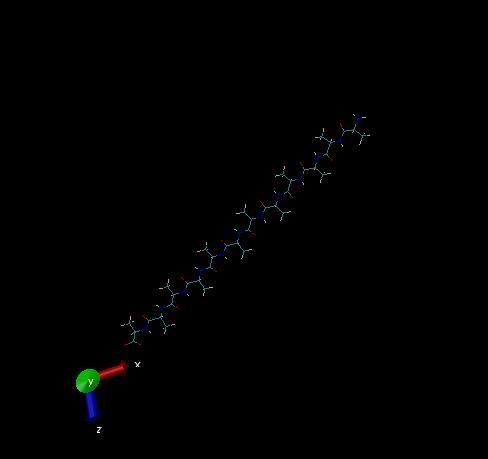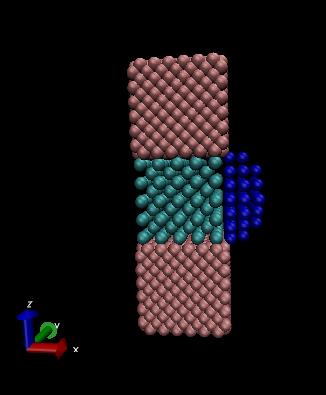A Python package to perform pre- and post-processing of molecular simulations
Project description
Welcome to Use Xponge!
Introduction
Xponge is a lightweight and easy to customize python package to perform pre- and post-processing of molecular simulations.
What can Xponge do?
Xponge includes three major categories of functionality, namely, the simulation system construction, simulation data transformation and analysis, and automated workflows for complex simulations. Xponge is mainly designed for the molecular dynamics (MD) program SPONGE[1], but it can also output some general format files such as mol2 and PDB, so it may help the other molecular modelling programs too.
Installation
Xponge can be used on all operating systems (Windows/Linux/MacOS). Some functions (See here for the detailed list) to do the quantum chemistry calculations can not be used on Windows because pyscf is not available on Windows.
1. pip install
pip install Xponge
2. source setup
-
2.1 Download or clone the source from the gitee or github repository
The gitee repository is here. The github repository is here.
git clone http://gitee.com/gao_hyp_xyj_admin/xponge.git git clone http://github.com/xia-yijie/xponge.git -
2.2 Open the directory where you download or clone the repository
-
2.3 (Optional) Configure the environment
It is recommended to use
condato configure the environment. Twoymlfiles namedinstall_requirements.ymlandextras_requirements.ymlare provided in the repository.It is recommanded to use the file
install_requirements.ymlto configure the environment. The file will only install the basic dependent packages. If aModuleNotFoundErroris raised when you are usingXponge, then install the module. This allows you to avoid installing many modules that you will never use, and also makesXpongemore cross-platform compatible. Here are the commands to useinstall_requirements.yml.conda env create -f install_requirements.yml conda activate Xponge
All the dependent packages are listed in the dependencies section. If you don't want to install the dependent packages one by one (which can be really annoying), the file
extras_requirements.ymlcan help you with the environment configuration except the packagesmindsporeandmindsponge. The two packages should be installed according to your device (e.g. whether the backend is CPU, GPU or Huawei Ascend Processors) and can not be simply installed by conda. Here are the commands to useextras_requirements.yml.conda env create -f extras_requirements.yml conda activate Xponge
It is worth noting that
extras_requirements.ymlcan not be used on Windows becausepyscfis not available on Windows. -
2.4 Run the command
python setup.py install
Installation check
There are some unit tests in Xponge. You can do the basic test to check whether the installation is successful like this:
Xponge test --do base -o test --verbose 1
Here, Xponge can be replaced to python -m Xponge, python3 -m Xponge and so on according to your settings of the environmental variables. Some files will be generated after the test is finished.
Quickstart
Here is a simple example.
import Xponge
# Import the force field you need
import Xponge.forcefield.amber.ff14sb
# Build the molecule like this
peptide = ACE + ALA + NME
# or like this
peptide2 = NALA + ALA * 10 + CALA
# or like this
peptide3 = Xponge.Get_Peptide_From_Sequence("AAAAA")
# See the documentation for more usage!
# Save them as your favorite format
Xponge.save_pdb(peptide, "ala.pdb")
Xponge.save_mol2(peptide2, "ala12.mol2")
Xponge.save_sponge_input(peptide3, "ala5")
Then we can see ala12.mol2 in VMD:
Here is another simple example.
import Xponge
import Xponge.forcefield.amber.tip3p
box = Xponge.BlockRegion(0, 0, 0, 60, 60, 60)
region_1 = Xponge.BlockRegion(0, 0, 20, 20, 20, 40)
region_2 = Xponge.BlockRegion(0, 0, 40, 20, 20, 60)
region_3 = Xponge.BlockRegion(0, 0, 0, 20, 20, 20)
region_4 = Xponge.SphereRegion(20, 10, 30, 10)
region_5 = Xponge.BlockRegion(20, 0, 20, 60, 60, 60)
region_2or3 = Xponge.UnionRegion(region_2, region_3)
region_4and5 = Xponge.IntersectRegion(region_4, region_5)
t = Xponge.Lattice("bcc", basis_molecule=CL, scale=4)
t2 = Xponge.Lattice("fcc", basis_molecule=K, scale=3)
t3 = Xponge.Lattice("sc", basis_molecule=NA, scale=3)
mol = t.Create(box, region_1)
mol = t2.create(box, region_2or3, mol)
mol = t3.create(box, region_4and5, mol)
Xponge.Save_PDB(mol, "out.pdb")
Then we can see out.pdb in VMD:
Detailed usage and API documentation
All can be seen here.
Contribution Guideline
If you want to contribute to the main codebase or report some issues, see here for the guides.
Dependencies
Xponge does not depend on other packages except numpy for its basic use.
However, there are some complicated functions that depend on some other packages. If you do not install the dependent package, you can not use the related functions.
Here is the list of all packages which may be uesd:
| package name | description | how to install |
|---|---|---|
| XpongeLib | c/c++ compiled library for Xponge | pip install XpongeLib |
| pyscf [2-4] | quantum chemistry | pip install pyscf |
| geometric[5] | geometry optimization | pip install geometric |
| rdkit[6] | cheminformatics | conda install -c rdkit rdkit |
| MDAnalysis[7-8] | trajectory analysis | pip install MDAnalysis |
| matplotlib | plot and visualization | pip install matplotlib |
| mindspore[9] | AI framework for machine learning | See the official website |
| mindsponge[1] | end-to-end differentiable MD | See the official website |
References
[0] Y. Xia, Y. Q. Gao, J. Open Source Softw. (2022) DOI:10.21105/joss.04467
[1] Y.-P. Huang, et al. Chinese J. Chem. (2022) DOI: 10.1002/cjoc.202100456
[2] Q. Sun, et al. J. Chem. Phys. (2020) DOI: 10.1063/5.0006074
[3] Q. Sun, et al. Wiley Interdiscip. Rev. Comput. Mol. Sci. (2018) DOI: 10.1002/wcms.1340
[4] Q. Sun, J. Comp. Chem. (2015) DOI: 10.1002/jcc.23981
[5] L.-P. Wang, C.C. Song, J. Chem. Phys. (2016) DOI: 10.1063/1.4952956
[6] RDKit: Open-source cheminformatics. https://www.rdkit.org
[7] R. J. Gowers, et al. Proceedings of the 15th Python in Science Conference (2016) DOI: 10.25080/majora-629e541a-00e
[8] N. Michaud-Agrawal, et al. J. Comput. Chem. (2011) DOI: 10.1002/jcc.21787
[9] MindSpore: An Open AI Framwork. https://www.mindspore.cn/
Project details
Release history Release notifications | RSS feed
Download files
Download the file for your platform. If you're not sure which to choose, learn more about installing packages.













